Navigation
Install the app
How to install the app on iOS
How To Use Progressive Web App aka PWA On 420 Magazine Forum
Note: This feature may not be available in some browsers.
More options
You are using an out of date browser. It may not display this or other websites correctly.
You should upgrade or use an alternative browser.
You should upgrade or use an alternative browser.
The Truth About LED Lights
- Thread starter DormGrow.com
- Start date
-
- Tags
- grow light hps led metal hallide
noobgrower33
New Member
Hey, do any of you know anything about the chineese Reflector led grow light?
I boughy a 300 watt one for 200$ and it seems to be working amazingly. I'm kinda blown away by how differnt my plants in the tent with the led are doing compared to my other identical tent with identical plants under T5 badboy 8 tube fixtures.
I boughy a 300 watt one for 200$ and it seems to be working amazingly. I'm kinda blown away by how differnt my plants in the tent with the led are doing compared to my other identical tent with identical plants under T5 badboy 8 tube fixtures.
noobgrower33
New Member
Hey, do any of you know anything about the chineese Reflector led grow light?
I boughy a 300 watt one for 200$ and it seems to be working amazingly. I'm kinda blown away by how differnt my plants in the tent with the led are doing compared to my other identical tent with identical plants under T5 badboy 8 tube fixtures.
I boughy a 300 watt one for 200$ and it seems to be working amazingly. I'm kinda blown away by how differnt my plants in the tent with the led are doing compared to my other identical tent with identical plants under T5 badboy 8 tube fixtures.
nobodyuknow
Well-Known Member
Are you talking about the Reflector series LED lights by TopLED?
SuperFunker
Well-Known Member
are 410nm LED's important? if yes, why?
DarkGreenGoo
New Member
I really wish I knew how to assemble my own lights.
I love constructing things by hand, from computers to machines. I just don't know enough about soldering/electronics when it comes to this type of stuff.
I love constructing things by hand, from computers to machines. I just don't know enough about soldering/electronics when it comes to this type of stuff.
Mars Hydro
420 Sponsor
if you need help, you can talk with me ,hahaha, our factory know, hope they can help you to some degree

I really wish I knew how to assemble my own lights.
I love constructing things by hand, from computers to machines. I just don't know enough about soldering/electronics when it comes to this type of stuff.
I do see a lot of people talking about how the LED grow light industry overstates there product, and I agree, they should say how much power they use, not how much power the chips are rated for, and it's stupid. I do however understand where they come from. The makers of LED's have used the same principals for calculating there power as in all electronics. If I have a resistor, and it is rated at 1/2 watt, I can not drive it at more that 1/4 watt, if I run it at 5/8 watt then I have to go to a 1 watt resistor. This is common practice and one of the electronic laws that must be followed. It's the same way with diodes, if I have a Zener diode of 5 watts, I have to keep it at less than 2 1/2 watts or kiss it goodby. Now when it comes to LED's it is not too much different BUT I can run a 3 watt led at 3 watts, but only in a pulse, not constantly. Not all LED's run at the same power though. Take a 3 watt red, it runs at .7A, and may drop 2.4V (or so) that's 1.68 watts. Now take a blue 3 watt LED, same .7A, but a break over voltage of 3.2V that's 2.24 watts. Both of these can be driven to the full 3 watts, but not for long, maybe 1/2 a second every few seconds like a cops light.
Having said all of that, I do wish the people that sell LED panels would use real power output instead of how many LED's they have so people can compare apples to apples when shopping. That's why I built my own. I have 75 3 watt deep red LED's, 18 royal blue, 18 blue, 18 cool white, 24 deep red, 30 far red, and 62 red, all 5 watt. So what do I call it, 1000 watts? It really uses just about 560 watts for the lights, and I'm sure it uses something for the power supply so should I call it a 600 watt unit? I guess I like the way they do it so now it must be a 1000 watter, what do you think of that?
Having said all of that, I do wish the people that sell LED panels would use real power output instead of how many LED's they have so people can compare apples to apples when shopping. That's why I built my own. I have 75 3 watt deep red LED's, 18 royal blue, 18 blue, 18 cool white, 24 deep red, 30 far red, and 62 red, all 5 watt. So what do I call it, 1000 watts? It really uses just about 560 watts for the lights, and I'm sure it uses something for the power supply so should I call it a 600 watt unit? I guess I like the way they do it so now it must be a 1000 watter, what do you think of that?
I do see a lot of people talking about how the LED grow light industry overstates there product, and I agree, they should say how much power they use, not how much power the chips are rated for, and it's stupid. I do however understand where they come from. The makers of LED's have used the same principals for calculating there power as in all electronics. If I have a resistor, and it is rated at 1/2 watt, I can not drive it at more that 1/4 watt, if I run it at 5/8 watt then I have to go to a 1 watt resistor. This is common practice and one of the electronic laws that must be followed. It's the same way with diodes, if I have a Zener diode of 5 watts, I have to keep it at less than 2 1/2 watts or kiss it goodby. Now when it comes to LED's it is not too much different BUT I can run a 3 watt led at 3 watts, but only in a pulse, not constantly. Not all LED's run at the same power though. Take a 3 watt red, it runs at .7A, and may drop 2.4V (or so) that's 1.68 watts. Now take a blue 3 watt LED, same .7A, but a break over voltage of 3.2V that's 2.24 watts. Both of these can be driven to the full 3 watts, but not for long, maybe 1/2 a second every few seconds like a cops light.
Having said all of that, I do wish the people that sell LED panels would use real power output instead of how many LED's they have so people can compare apples to apples when shopping. That's why I built my own. I have 75 3 watt deep red LED's, 18 royal blue, 18 blue, 18 cool white, 24 deep red, 30 far red, and 62 red, all 5 watt. So what do I call it, 1000 watts? It really uses just about 560 watts for the lights, and I'm sure it uses something for the power supply so should I call it a 600 watt unit? I guess I like the way they do it so now it must be a 1000 watter, what do you think of that?
I agree that LED grow lights should be named by the Actual DRAW out of the wall in wattage, not the perspective wattage, not the equivalent wattage, but what exactly your product draws (within a 10 watt tolerance). I believe this is why there are so many people that hate LED's or don't trust the technology, because so many people have been burned by these false advertising methods. I mean I would be pissed too if I bought a light pushing 180w and it was sold to me to rival a 600w or 1000w HID...
SuperFunker
Well-Known Member
to Techhead and Icemud: the honest/reputable LED grow light companies do typically offer real power consumption data or both (potential and real)... if they dont, wld suggest to me that they are purposely hiding information... my issue with most LED grow light companies is that they dont offer real world spectral analysis and if they do offer some sort of spectrum graph, often its a cartoon graph that doesnt provide any tangible information...
to Techhead and Icemud: the honest/reputable LED grow light companies do typically offer real power consumption data or both (potential and real)... if they dont, wld suggest to me that they are purposely hiding information... my issue with most LED grow light companies is that they dont offer real world spectral analysis and if they do offer some sort of spectrum graph, often its a cartoon graph that doesnt provide any tangible information...
I agree, there should be a standard set of data that these LED companies are required to show...
PPFD over a 4x4 area graph
Actual spectroradiometer readout of the emitted spectrum.
LED chip brand, type, model and BIN....
What type of drivers are used, and brand...
What is the operating case temp of the unit on multiple faces...
It would even help to know more stats about the units such as what drive current they use, what materials are used in thermal management, and other tech details.
Who is the actual manufacturing company and where are they located?
What angle lenses are used in the lights?
A list of full wavelength diodes used in the lights..
Actual draw wattage and current of the product out the wall.
Almost all these companies claim "years of R&D" which doesn't say anything.. how about proof of these studies, logic behind their products design, 3rd party tests and results, labs or colleges involved in their development...
SuperFunker
Well-Known Member
yup agree... this is the sort of graph that i would like to see...
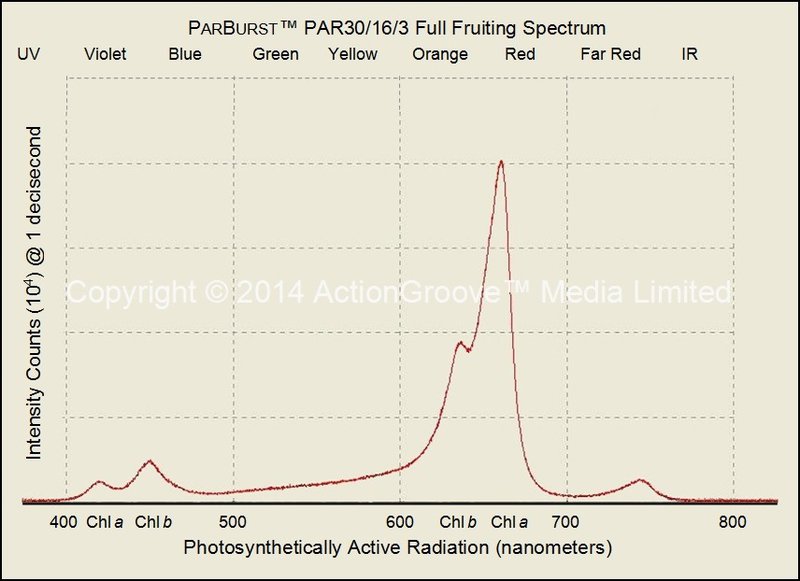

This is for any of the LED panel manufactures out there. When I upgraded my first panel of LED's I stopped in at my local hydro shop. I couldn't help myself, and just had to show somebody. Anyway, I asked him why he didn't have any LED's in his shop. He said the same thing as everybody has said here. He could not figure out what product to promote because he doesn't want to get a bad rep for selling junk. His store is pretty new, and I can tell he is just building his inventory, so I know he has to watch where his money is spent. Bottom line is, there are no LED's to even look at in any of the shops for at least 150 miles of here, so how can you sell your product.
I may be old school but I like to look at a real product before I buy anything. All the hype is one thing, but a guy like that needs something solid to see. Like I said before, there does need to be some kind of facts to base a judgment on what is a good product, and what belongs in the bone yard, and who has the best blend of color to do the job without any extra wasted power.
I may be old school but I like to look at a real product before I buy anything. All the hype is one thing, but a guy like that needs something solid to see. Like I said before, there does need to be some kind of facts to base a judgment on what is a good product, and what belongs in the bone yard, and who has the best blend of color to do the job without any extra wasted power.
Avgjoe
420 Member
I agree completely.Thats why I went out and bought one and am doing a side by side grow so I can see with my own 2 eyes, "proofs in da pudding", as i say often.It would be nice to see an LED grow at any hydro store around me as well.They just dont have them here
LEDBud
Well-Known Member
Some PAR meter tests on YouTube show a substantial increase in both the red and blue spectrum's of the led panels over the HID lights.
I am pretty thrilled to be growing with them , the Future is 420 friendly .. love it.
I am pretty thrilled to be growing with them , the Future is 420 friendly .. love it.
LEDBud
Well-Known Member
The 7150 lumens of the led have much more PAR light then the 29000 lumens of the hps bulb.
(look into par values to see the efficiency of the led's compared to hps)
In other words the hps has a mess of visible light that the plants cannot use where as the led's have a mess of light in the par values which the plants do use.
This is the reason why led's are described as being more efficient per watt then the HPS
Your 180w led is closer to a 400w hps in its par values
(look into par values to see the efficiency of the led's compared to hps)
In other words the hps has a mess of visible light that the plants cannot use where as the led's have a mess of light in the par values which the plants do use.
This is the reason why led's are described as being more efficient per watt then the HPS
Your 180w led is closer to a 400w hps in its par values
DarkGreenGoo
New Member
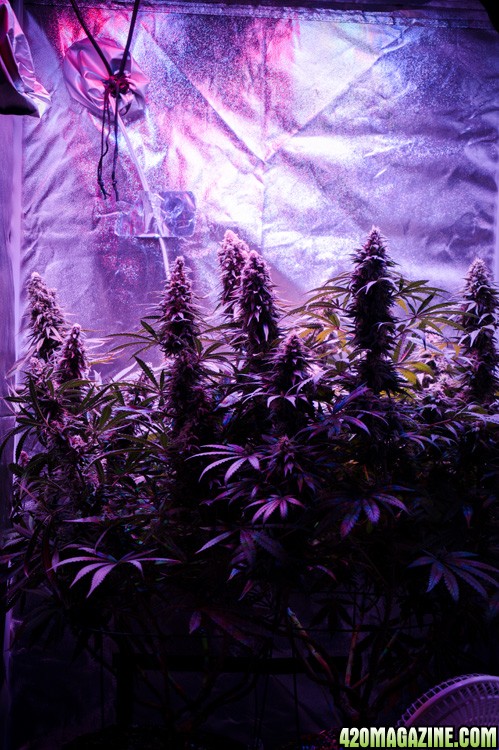
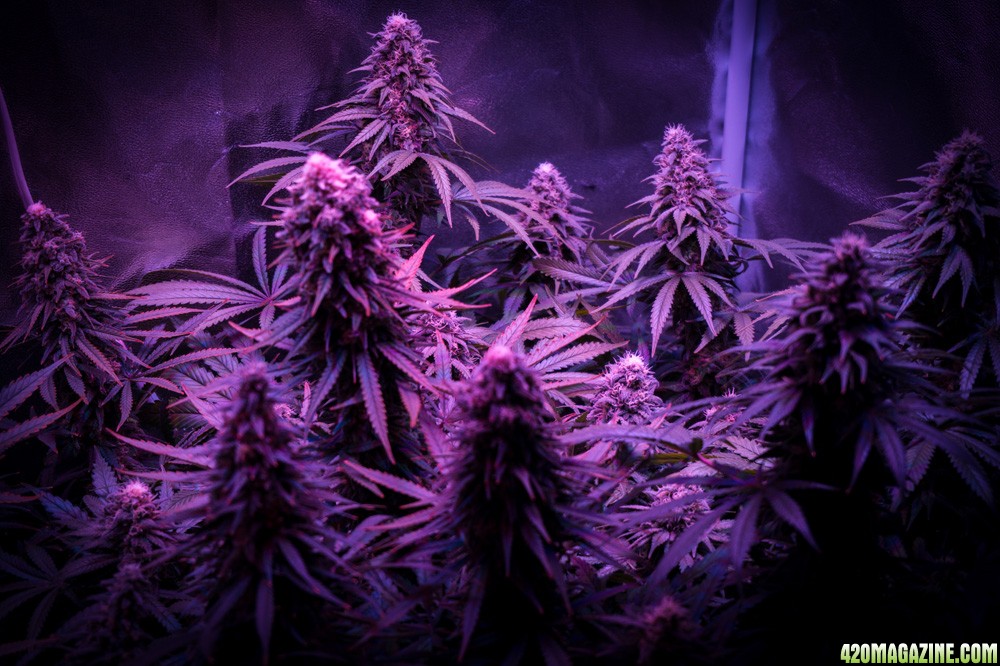
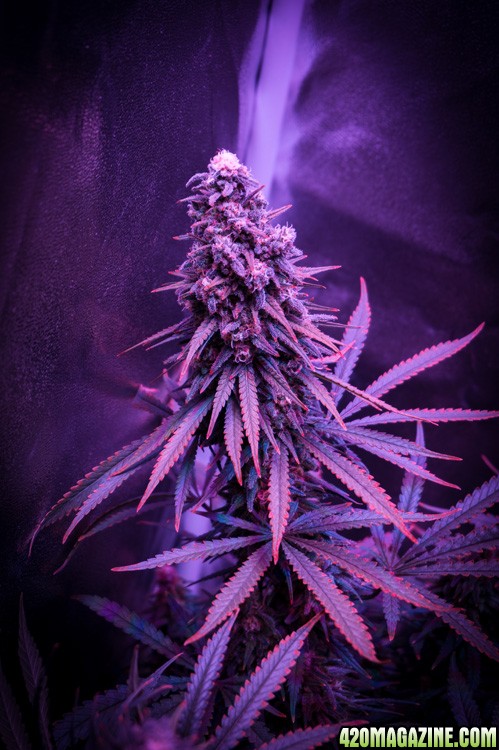
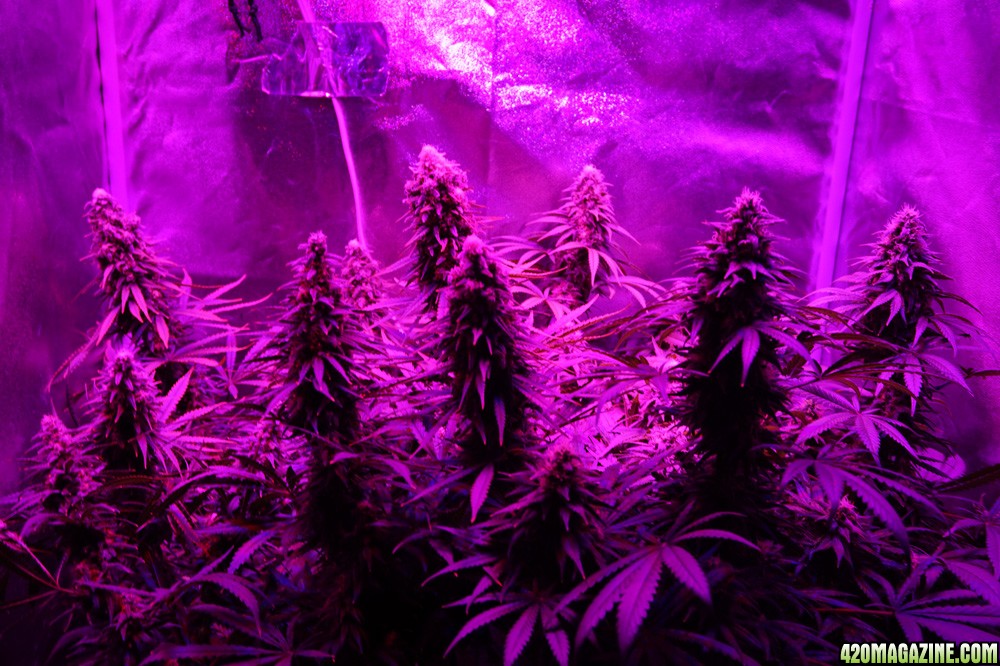
I am an LED convert now.
Similar threads
- Replies
- 4
- Views
- 660
- Replies
- 78
- Views
- 7K



